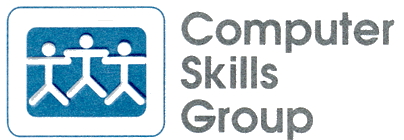

I have often recommended the use of external hard disks for backing up your valuable computer files. When you acquire one of these external hard disks, even though it will appear to work as soon as it's plugged in, it still needs to be reformatted.
Here's the background as to why -
Several years ago, with the release of Windows 2000 and Windows XP, Microsoft began the process of migrating the general public off of the older "9x" technologies (Windows 95, 98, and ME) and onto "NT" based technologies. NT had been the commercial version of Windows and it was known to be much more reliable. It also provided more extensive security features, not available in 9x versions.
Every computer uses what is known as a "file system" to keep track of where each file is stored, how long it is, where the free space is on the disk, etc. Migration presented a problem however. Windows 9x used a file system known as FAT32 (File Allocation Table for 32 bit machines). Windows NT used a completely different file system called NTFS (NT File System). Migration was going to require that Windows 2000/XP users be able to read and write BOTH systems, and so it is. The newer NT based system can read and write both systems. Most of the time, we could care less about this technicality but preparing a disk for use in backup is a special case.
How does this effect us?
The external hard disk manufacturers have no idea how, or on what systems, their disks will be used. To accommodate people using 9x as well as NT, they format their disks using FAT32. It makes sense. NT users can read FAT32 but 9x users can't read NTFS. A FAT32 disk will plug in and work right out of the box, no matter which file system the customer is using. So far, so good, except for doing backups.
Backing up an entire computer, using the Windows Backup command, writes all the files into ONE single file. When FAT32 was invented, the computers didn't have the massive disks we have today. The designers built a limit into FAT32 that said that a single file could not exceed 4 GB (gigabytes) in size. Under XP, we often need to backup 7 or 8 GB at a time. FAT32 just aborts the run when it reaches 4 GB. We get a error message and have just wasted a lot of time.
How do we resolve this problem?
The solution is to convert the FAT32 formatted disk into NTFS format, eliminating the file size limitation. Fortunately, this procedure takes only a few minutes and it relatively easy to do.
In case you are reading this and saying, "Oh no, I've already copied some files to my external hard disk." Don't worry, the conversion can even be done AFTER you have written files to the disk. The files will come across intact. (I've done it myself)
Here's how the conversion is done -The program will then proceed to convert drive X: from FAT32 to NTFS.
The C:\> DOS prompt will not reappear until the conversion is completed.
To check that all went well, open Windows Explorer again, RIGHT-click on the external hard drive and select Properties. The information window which opens will list the File system: as NTFS.
While you have the Properties window open, you might want to give the external disk a meaningful name (the volume label). In the blank box at the top of that window, type in a name such as "External 40". When you close the window normally, the removable disk will now be labeled "External 40" whenever it gets plugged into a machine.
One final note - Since this tip is about backup, please remember this. When you go to run the Windows Backup routine, DO NOT check the box that says, "Back up everything on this computer". Why? Because the external hard disk is now considered part of the "entire computer". You will end up backing up the backup, over and over, until you fill the entire backup disk! Instead, click the choice that says, "Back up selected files, drives, or network data". Then, click on the disks you are backing up (in most cases, just the C: drive).